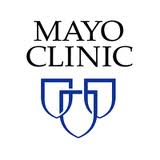The healthcare industry is searching for a new health IT infrastructure strategy, especially in the field of easy and available access and protection of confidential data. The need for such proper documentation gets more critical as new volumes of data are added, and such critical information is essential to improve care quality. The healthcare organisation needs a storage infrastructure that is flexible enough for frequent adjustments and fresh data addition, a structure which is dependable enough to produce the right data at the right time, and enhanced enough which will drastically improve IT agility and efficiency.
Therefore, a Vendor Neutral Archive (VNA) is the best tool to meet all the requirements listed above. Healthcare providers will surely experience the benefits of VNA, which could greatly help them in ensuring quality and coordinated patient care.
What?s the current situation in the healthcare industry?
In 2016, the International Data Corporation (IDC), in collaboration with the DELL EMC, had predicted that there will be the productions of 2,314 exabytes of data by 2020. In 2015, the Centres of Medicare and Medicaid Services (CMS) had planned to install alternative payment methods and value-based reimbursement for half of their Medicare payments by 2018. This would require serious alternations to the generation, analysis and storage of data by healthcare providers. Though there have been positive changes in the data needs of clinicians thanks to value-based contracting and the reduction of service utilisation, costs and resource use.
Payment is associated with clinical efficiency and patient outcomes in a value-based care environment,, and this makes healthcare data fragmentation an issue. The reason for this is greater access to data sources and analytics which will make it easier to determine the proper treatment for the patients. Undergoing consolidations has also been a major trend to promise improved management costs and better patient experience, but its drawback includes the merging organisation?s inability to synthesis information with their administrative operators.
Therefore, traditional IT infrastructure consisting of legacy workflows and architecture are not capable of providing a complete and holistic view of the patient, and medical imaging data which will help in providing the due medical support to the patient. The Vendor Neutral Archive (VNA) helps create a healthcare structure that can adapt to new data sources and workflow adjustments, which can greatly improve IT efficiency and agility and help provide the right data at the right time.
Working with PACs and VNAs
One can see individual medical departments (for example, cardiology, dermatology, dental) using Picture Archiving and Communication systems (PACs) for the management of data images and sharing the data within their departments. In a general hospital setting, the relevant imaging information is stored by the department on its own server and storage. Similarly, information could be shifted from and to various medical departments by means of the Digital Imaging and Communications in Medicine (DICOM) to a PACs application server. From the server, the information could be worked within a diagnostic workstation, desktop computer, tablet or any similar device. However, this is a problematic solution for those medical practitioners who work with the same patients. Moreover, the overall procedure to work with PACs can be complicated from a patient and workforce viewpoint, as it is very technical in nature.
A DICOM file works with the two components of header and image. The header identifies patient information, while the image comprises related metadata. The relevant files are thus stored and shared in the PACs server. As the DICOM has been an integral data storage infrastructure system, a storage upgrade might be an expensive and time-consuming endeavour.
Healthcare organisations also make it a point to go for a periodic refresh every three to five years. This is done to prevent hardware failures and to upgrade the infrastructure. Moreover, a patient?s personal history isn?t altered in case of a change, once the same has been fed to the metadata on the DICOM. Therefore, the information on the DICOM metadata and the PACs database might be inconsistent, leading to further problems. Sometimes, clinicians might be unable to take a proper decision due to irretrievability of medical images or the inability of the same to be read by other health IT infrastructure.
What does a VNA do?
A VNA enables updates to DICOM files and pointers, which reduces costs and burdens related to the processes. It can integrate various viewing capabilities from healthcare organisations and storage with relevant IT solutions, and different PACs application servers. Moreover, its automated data reconciliation capabilities enable less time consumption on data retrieval by the healthcare providers. Thus, a VNA reduces data migration and PACs costs,, and improves access to medical imaging data.
VNA deployment approaches
The challenge is to properly prepare the healthcare organisation for a VNA deployment, and to choose the best strategy for a successful VNA system. The performance of a single-phase VNA would depend upon the data stored by the healthcare organisation and other legacy architectures. However, the organisation also needs to consider a few more points before a VNA deployment ?
- Data migration can be a risky job, considering the costs and risks. The healthcare organisations need to consider the patients? needs, the capability of the IT department and the data migration process.
- The cost of maintenance can be quite high for the legacy systems at the time of migration. Warranties might need to be extended or risk the lack of protection during the migration process.
Health organisations need to look for a capable VNA deployment strategy to implement the medical imaging technology, along with the consolidation of health IT infrastructure. They should ensure that the deployment is capable to work with advanced data analytics, private, public and hybrid clouds and clinical workflows. Organisations can choose from either a VNA deployment or a phased approach. Therefore, a business imperative should be combined with medical imaging integration with other healthcare IT system to ensure proper medical treatment with complete patient information.









